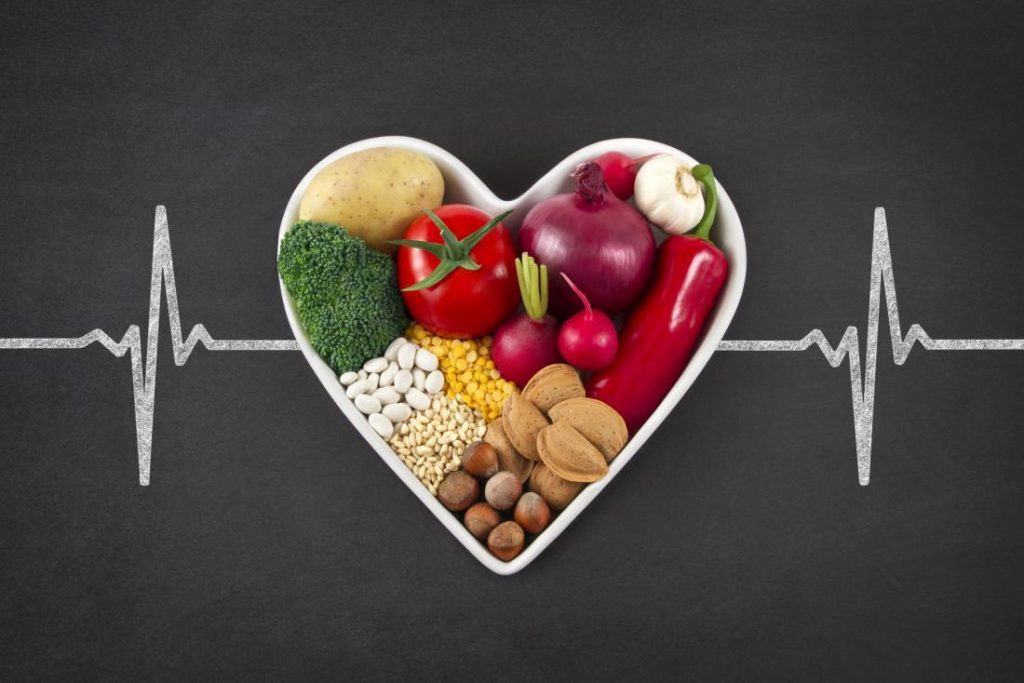
Cholesterol: the Good, the Bad, and the Ugly by David Porzio, M.D.
Questions? We are here for you! 1-877-MY DOC NOW (1-877-693-6266)
Save time, book your reservation online HERE
There is no debate among medical professionals that elevated blood cholesterol or lipid levels are associated with an increased risk of stroke, heart attack, and death. There have been literally hundreds of clinical trials involving tens of thousands of patients which have clearly demonstrated that lowering lipid levels reduces the risk of cardiovascular death, heart attack, need for coronary artery stents and/or coronary artery bypass surgery. During my clinical practice, I have found that most patients desire more than just a prescription for a medication; many wish for a real education and understanding of blood cholesterol. In this article I will attempt to educate and inform you about blood cholesterol.
Blood cholesterol is compromised of multiple different fractions but for our purposes I will break it into 5 main components; three components are measured in the most basic cholesterol blood test and the other two are calculated from the other values.
- Total cholesterol (TC)- the total amount of circulating cholesterol in the blood stream and includes all the types of cholesterol.
- Triglycerides (TG)- the first form of cholesterol created when there are excess calories consumed at a meal.
- High Density Lipoprotein (HDL)- the “good cholesterol” because it helps to clear the blood stream of the other cholesterol fractions and return them to the liver.
- Low Density Lipoprotein (LDL)- the “bad cholesterol” and has been identified as the primary form of cholesterol that becomes deposited into the wall of blood vessels. This process leads to plaque formation in the artery with resulting narrowing of the v
 essel. The LDL value can be measured directly but is typically calculated from the HDL and TG levels as long TG is < 450.
essel. The LDL value can be measured directly but is typically calculated from the HDL and TG levels as long TG is < 450. - Non-HDL cholesterol (non-HDL)- This is calculated by subtracting the measured HDL value from the TC. It is important because it is a measure of all the other “bad cholesterol” in addition to LDL that is not included in the typical Fasting Lipid Profile (FLP) blood test.
Now that we know all the players in the cholesterol game, the next question is how low should each of the levels be? To answer the last question, we must determine some idea of what the cardiovascular (CV) risk is for a given individual. Once we have an idea of the risk, there are guidelines a physician can use to determine that person’s ideal lipid levels, how far they are from those levels and what the best therapy will be to get them to a more ideal cholesterol level. There are 4 broad categories to group patients based on their CV risk factors. The following table will help us understand the lipid goals for those categories:
| 1 Cardiac Risk Factor* | 2 Cardiac risk Factors | Diabetes**, known ASCVD**, Framingham risk score 10-20%*** | Combination of Diabetes and known ASCVD or Framingham risk score > 20% | |
| Total Cholesterol | < 200 | < 200 | < 200 | < 200 |
| Triglycerides | < 150 | < 150 | < 150 | < 150 |
| HDL Cholesterol | > 40 M, > 50 F | > 40 M, > 50 F | > 40 M, > 50 F | > 40 M, > 50 F |
| LDL Cholesterol | < 160 | < 130 | < 100 | < 70 |
| Non-HDL Cholesterol | < 190 | < 160 | < 130 | < 100 |
*Cardiac Risk Factors: Age > 45 (male) or > 55 (female), smoking, high blood pressure, family history of premature heart disease
**People with Diabetes Mellitus have the same CV risk as someone who has already had a heart attack, stroke, coronary stent or bypass surgery but does not have Diabetes.
**ASCVD is the documented presence of plaque in the arteries either because of prior heart attack, stroke, coronary stent or bypass surgery or an imaging study that demonstrates arterial plaque.
***Framingham Risk Score is a calculation performed by a physician based on risk factors, blood pressure, smoking etc. People with higher scores (e.g. > 20% five year risk of a CV event) are at increased risk.
A quick glance at the table shows us that the TC, TG, and HDL levels are the same for all risk categories. The moving targets are the LDL and the non-HDL because they are the crux of the cholesterol problem.
Once an individual’s CV risk is determined and cholesterol goal identified, the next part of the treatment decision process is how to get the patient to their cholesterol goal. The first step in the process is to measure their fasting lipid panel (TC, TG, HDL, LDL).  Once their levels are known, a physician can simply use the table to determine what the minimum cholesterol level should be.
Once their levels are known, a physician can simply use the table to determine what the minimum cholesterol level should be.
There are several choices for lowering cholesterol:
1. Diet and exercise will produce at best a 7-12% reduction in cholesterol levels.
2. Dietary supplements such as plant stanols and sterols will lower cholesterol 10-25% and are part of the dietary approach to lowering cholesterol.
3. Medications with the statin drugs are the most potent way to lower cholesterol (20-55% reduction) depending on the choice of medication.
Once the FLP is known and the cholesterol goal is determined, the decision to treat and the method becomes a physician and patient decision. I use a pragmatic and relatively simple approach; I believe treatment should be individualized for the patient based on their CV risk and the percentage reduction they require to reach their goal. The following treatment strategy is with respect to lowering the TC and LDL. The lowering of TG and the raising of HDL will be discussed later in this article. It is important to remember that the body does not care how it arrives at the TC and LDL goal values. I encourage all patients to have a reduction in their fat intake (30% of daily calories from fat and 10% from saturated fat) and an active lifestyle with ideally 30-45 minutes of aerobic exercise 4-5 times per week. I also know from clinical experience that even the most restrictive diets with reduced fat intake and prescribed exercise will lower cholesterol levels at best 5-10%. The exercise component is very important though because it increases the HDL levels and lowers the TGs levels (and very few treatments can do this) and promotes production of nitric oxide by the arteries, which is important for overall vascular health. Assuming everyone is following the dietary and exercise recommendations, treatment with cholesterol lowering medications or supplements are best determined by the percent reduction required for that individual.
1. If < 10% reduction is required, then a trial of a cholesterol-lowering supplement such as the plant stanol/sterols should be tried first.
2. If a 20-35% reduction is required, then a first generation statin medication will usually be effective (lovastatin, pravastatin ).
).
3. If a 35-45% reduction is required, then a second generation statin will usually be effective (simvastatin, atorvastatin).
4. If a > 45% reduction is required, then a 3rd generation statin will definitely be required (rosuvastatin or a combination of simvastatin or atorvastatin with ezetimibe).
There are other treatments available to lower cholesterol such as: niacin, fibrates, and bile acid sequesterants. Unfortunately none of these other treatments are as effective at lowering TC and LDL as the statins. More important, there appears to be anti-inflammatory properties of the statins that are also beneficial. Once treatment is initiated with a statin drug, the FLP should be repeated in 2-3 months as well as the alanine aminotransferase (ALT) levels to monitor the liver and the creatinine kinase (CK) levels to monitor for muscle inflammation. Once the goal cholesterol (TC and LDL) has been reached, the FLP, ALT and CK can be measured yearly.
Invariably, patients are concerned about taking a statin medication because of the risk for liver damage and/or the risk of muscle inflammation. It is true that the statin mediations are associated with these two adverse reactions but the occurrence of either is rare. These conditions can be avoided by following routine monitoring of ALT and CK for a patient on a stable dose, or after a dose increase, or change to a different statin drug. For instance, if a patient complains of muscle soreness or weakness, the statin can be stopped while the CK level can be checked. If the CK is not elevated, the drug can be resumed safely. If a patient has an asymptomatic increase in either the ALT or CK, the labs can be followed for further increase with the intention to stop the drug if the values continue to rise. Oftentimes the elevated levels return to normal values without any interruption of therapy. When used and monitored properly, statins can be a very safe and effective means of lowering TC and LDL.
There is another important group of patients at increased risk for cardiovascular disease whose primary problem is too low an HDL and too high TGs. Patients who fall into this group, known as the metabolic syndrome, have three of the following five conditions:
1. Elevated TGs
2. Low HDL (<40 for males, < 50 females)
3. High blood pressure
4. Abnormal fasting blood sugar between 110-126
5. Waist circumference of 40 inches for a male and 35 inches for a female
This group is targeted for treatment, which is usually challenging. TGs as previously mentioned, are created when a person consumes an excess of calories especially in the form of simple sugar and carbohydrates. So reduction of carbohydrates in the diet is the first step in treatment, which hopefully will result in weight loss and lowering of TGs and the elevated blood if present. Another effective treatment to lower TGs is consumption of Omega-3 Fatty acid supplements. Two grams taken twice daily can reduce the TGs by up to 45% and is one of the most effective therapies. Fibrates also lower TGs effectively (20-50% decrease) as well as LDL, but must be used carefully with patients already taking a statin due to the combined potential liver toxicity. Niacin, which is essentially vitamin B-3 or nicotinic acid is proven to be effective at lowering TGs by 20-50% but is difficult for some patients to tolerate. Low HDL is also part of this syndrome, but raising that important fraction of cholesterol is probably the most difficult to achieve. To date, millions of dollars have been spent trying to find the “magic pill” that will raise HDL with an associated decrease in CV risk.
Low HDL is an established, independent risk factor for heart disease. One need only look at the concept of non-HDL cholesterol to better understand why and what approaches may be beneficial to treating this condition. Non-HDL is TC minus HDL and that fraction contains the worst cholesterol players. If a patient’s TC is high and HDL is low, the non-HDL will be high; there are a lot of the most atherogenic (plaque producing) cholesterols floating about: LDL, VLDL, IDL, LPA, and others. Treating a low HDL is definitely the most challenging aspect of lipid therapy for a physician. There are very few drugs or supplements available that appreciably increase the HDL fraction:
| Drug | % increase HDL |
| Statin | 5-15% |
| Niacin | 15-35% |
| Fibrates | 10-35% |
| Bile Acid Sequesterants | No effect |
The following example illustrates the challenge of increasing HDL with the treatment options available.
Patient #1 (high TC, TG and low HDL):
37 year-old male with controlled high blood pressure and family history of heart attack (2 CV risk factors)
TC = 200 (<200), TG 120 (< 150), LDL 125 (< 130), HDL 28 (>40), non-HDL 172 (< 160).
So as you can see in this example, all lipid parameters are at goal except the HDL and non-HDL. Using niacin or a fibrate may increase the HDL at most by 30%. Below is calculation of the expected increase in HDL.
28 x 0.10 = 2.8 x 3 = 9 point increase in HDL. So we could expect the HDL to increase to 28 + 9 = 37. Still woefully below the > 40 goal and non-HDL is still > 160 at 163.
Considering the non-HDL equation, which is TC – HDL = non-HDL. If we cannot significantly increase HDL, then the other target is to lower the TC. Another approach would be to the low HDL, which would be to treat with a statin to achieve a 20% reduction in TC and LDL. Here is the calculation of the effect of a statin on the FLP:
200 x 0.20 = 40 point decrease in TC. So the TC should fall to 160.
125 x 0.20 = 25 point decrease in LDL. The LDL should drop to about 100.
More important is the effect on non-HDL cholesterol by lowering the TC by 20% even if the HDL remains 28
TC 160 – HDL 28 = non-HDL 132.
Treatment to lower the TC has is a threefold benefit:
- Lower TC
- Lower LDL
- Lower non-HDL
Whereas treating just the low HDL has very limited benefit. It is likely niacin or a fibrate would also be used for the HDL-raising benefit, but the biggest bang for the buck is achieved by lowering the TC with a statin. Lowering the TC is always beneficial even in patients with a high HDL.
In summary, cholesterol and especially LDL is a scientifically established promoter of atherosclerosis. There is an undeniable benefit from lowering TC and LDL as well as TGs and trying to raise HDL to lower the risk of heart attack, stroke, and ASCVD-related events. The first step in the process is determining the individual’s risk of CV disease and then measuring the FLP. Once the general risk group has been defined and the cholesterol goal levels established, treatment can be initiated. If the lipid levels are < 10% away from the desired goal a dietary/lifestyle approach can be attempted. If a > 10% reduction of cholesterol is required to reach goal, then dietary/lifestyle approach plus a lipid lowering agent are indicated. The statin medications have an excellent track record of safety and efficacy and should be the first agent used in the vast majority of patients. The choice of agent should be dictated by the percent reduction required with the more potent agents reserved for those who need > 45% reduction in lipid levels. Careful monitoring of the liver and muscle proteins should be part of the treatment plan for patients taking a statin medication. Other agents can be added if further reduction is needed and agents specific for lowering TGs and or raising HDL can be incorporated if the goal is not achieved with statin therapy.
Questions? We are here for you! 1-877-MY DOC NOW (1-877-693-6266)
Save time, book your reservation online HERE
The information provided is for general interest only and should not be misconstrued as a diagnosis, prognosis or treatment recommendation. This information does not in any way constitute the practice of medicine, or any other health care profession. Readers are directed to consult their health care provider regarding their specific health situation. Marque Medical is not liable for any action taken by a reader based upon this information.

